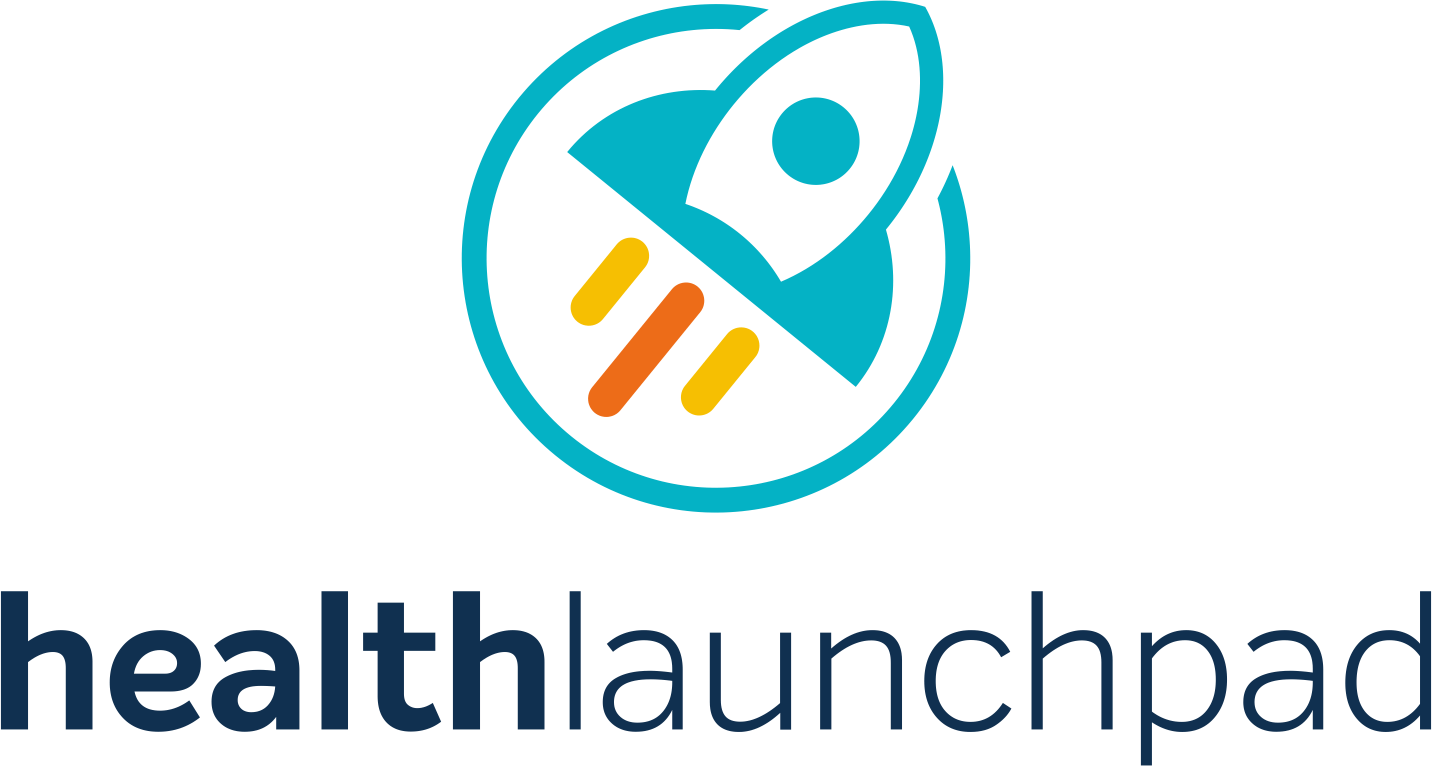At the recent Healthtech Marketing Summit hosted by healthlaunchpad, a panel of industry leaders delved into the strategies, challenges, and opportunities that are reshaping healthtech marketers generate demand. The panelists, including Matt Carollo from HIMSS, Hannah Drake from health launchpad, Lucy Railton from the Drumond Group, and Adam Rosenberg from RxLightning, shared their insights and experiences, painting a picture of an industry in flux yet poised for growth and innovation.
Listen to the Episode
Navigating the Complex Healthtech Buyer Journey
One of the most significant challenges facing healthtech marketers today is the increasing complexity of the buyer journey. With multiple stakeholders involved and buying cycles that can span several months or even years, marketers must adopt a more strategic and targeted approach to demand generation. This requires a deep understanding of the decision-makers, their pain points, and the content that resonates with them at each journey stage. As Matt Carollo highlighted referencing research conducted by HIMSS in late 2023,
“60 percent of the organizations told us that there are five or more people as part of that tech buying process. And more than a quarter of those organizations say that there are 10 or more people involved in decision making.”
Shifting Content Preferences and the Rise of Vendor-Focused Content
To effectively engage buyers in this complex landscape, healthtech marketers are shifting their content strategies. There is a growing emphasis on vendor-focused content, such as product demos and success stories, as buyers seek tangible evidence of a solution’s value and impact. Marketers must prioritize the creation of compelling, easily digestible content that addresses buyers’ specific needs and challenges. Lucy Railton noted,
“We’re really struggling with the balance between wanting to freely share our information in the channels where our audiences are, because nobody wants to give you their email address anymore.”
The Resurgence of In-Person Events and Tradeshows
Despite the challenges posed by the pandemic, in-person events and tradeshows are reemerging as powerful channels for demand generation and relationship-building. These events provide a unique opportunity for marketers to showcase thought leadership, demonstrate product capabilities, and engage in meaningful conversations with prospects. By leveraging the power of face-to-face interactions, healthtech marketers can build trust, credibility, and lasting relationships with potential buyers. Hannah Drake emphasized,
“Events are definitely still king from a marketer’s perspective and lead quality.”
Harnessing the Power of Referral Marketing and Client Communities
Referral marketing and client communities are proving to be highly effective in driving demand, particularly in the provider space. By nurturing strong relationships with existing clients and encouraging them to share their success stories, healthtech marketers can tap into a valuable source of trusted referrals and recommendations. This approach not only generates new leads but also helps build brand advocacy and loyalty. As Adam Rosenberg pointed out, “
We’ve done a lot of referral marketing because we realize the value of that personal connection.”
Watch the Full Session
The Decline of Gated Content and the Rise of Valuable, Ungated Resources
As buyers become more discerning about the content they consume, traditional tactics like gated content are losing their effectiveness. Healthtech marketers must adapt by focusing on providing valuable, ungated resources that demonstrate expertise and add genuine value to the buyer’s journey. This customer-centric approach to content creation emphasizes thought leadership, educational resources, and practical insights that address buyers’ specific pain points. Lucy Railton shared,
“Making sure that we’re sharing things freely on social media, so again, it goes back to that really want to kind of do the good work on the channels where our prospects are, but having that addiction to leads, you know, from people.”
Leveraging Intent Data for Personalized Outreach
To deliver more targeted and personalized experiences, healthtech marketers are increasingly turning to intent data. By leveraging insights into buyer behavior, preferences, and interests, marketers can create more relevant content, optimize campaign targeting, and enable sales teams to engage prospects more effectively. The use of intent data platforms and strategies is becoming a critical component of successful demand generation in the healthtech space. Matt Carollo explained,
“We’re actually starting to build intent data into kind of all of our programs across, right. And, and obviously that’s using our first-party data.”
Balancing Brand Awareness and Demand Generation Efforts
While driving revenue growth is the ultimate goal of demand generation, healthtech marketers recognize the importance of building a strong and recognizable brand. Investing in brand awareness campaigns, thought leadership, and educational content helps establish credibility, differentiate from competitors, and create a more receptive audience for demand generation efforts. Striking the right balance between brand-building and demand generation is crucial for long-term success. Hannah Drake stressed,
“The one thing that we haven’t touched on that is one of those kind of roadblocks or frustration parts to creating a successful ABM campaign is the importance of awareness and things that unfortunately are not going to just necessarily generate those leads, but they’re so top of the funnel. You’re not going to get that next level without them, right?”
Aligning Marketing and Sales for Revenue Growth
To maximize the impact of demand generation efforts, healthtech marketers must work hand in hand with their sales counterparts. By aligning around shared revenue goals and funnel progression metrics, marketing and sales teams can collaborate more effectively to drive demand, accelerate deals, and grow the business. This alignment requires a clear understanding of each other’s roles, objectives, and contributions to the revenue pipeline. Adam Rosenberg emphasized,
“Marketing and sales need to partner really closely. Back in the day, it used to be throw sales as many leads as you can and forget about it. Now, I mean, I have a revenue goal on my head because I think we should be partnered so closely together that I want to help them accelerate their deals and push them over the finish line.”
From Quantity to Quality: Redefining Demand Generation Metrics
Healthtech marketers are shifting their focus from vanity metrics like lead volume to more meaningful indicators of success, such as revenue impact, conversion rates, and velocity through the sales funnel. This shift reflects a more holistic and long-term view of demand generation, emphasizing the quality and value of the leads generated rather than just the quantity. By adopting a quality-over-quantity mindset, marketers can better demonstrate their contribution to business growth and align with organizational priorities. Lucy Railton explained,
“We’re moving to more of a revenue attribution or revenue influence approach as opposed to we brought in 50 leads last week.”
Overcoming the Challenges of Adopting New Demand Generation Strategies
Implementing new demand generation strategies, such as account-based marketing (ABM), can be met with resistance from internal stakeholders who may be more comfortable with traditional lead generation tactics. To gain buy-in and support, marketers must clearly articulate the benefits of these approaches, provide compelling proof points, and collaborate closely with sales leaders to develop and execute targeted campaigns.
By effectively “marketing” these strategies internally, healthtech marketers can overcome barriers to adoption and drive meaningful change. Hannah Drake noted,
“This is the linchpin of whether ABM works or does not work. So marketers, our job is to know and select and promote the functions and strategies that are going to work and help grow business revenue. But when it comes to selling it to sales development people, it highlights the importance of your ability to have those soft leadership skills, actually use your marketing skills to market ABM to your sales people.”
The Future of Healthtech Demand Generation: Agility, Adaptability, and Customer-Centricity
As the healthtech industry continues to evolve, marketers must remain agile and adaptable to stay ahead of the curve. This may involve investing in new skills and capabilities, such as data analytics, content marketing, and sales enablement, as well as fostering closer partnerships with sales, product, and customer success teams. At the same time, the human element of marketing remains essential. By combining the power of data and technology with the art of storytelling, messaging, and relationship-building, healthtech marketers can create compelling and differentiated experiences that drive demand, build loyalty, and fuel long-term growth. As Adam Rosenberg put it, “Even as new technologies and data-driven approaches become more prevalent, the ability to understand and connect with buyers on a human level remains essential.”
The Healthtech Marketing Summit panel provided a wealth of insights into the evolving landscape of demand generation in the healthtech industry. By embracing a more strategic, targeted, and customer-centric approach, and continually adapting to new technologies and buyer behaviors, healthtech marketers can redefine success and drive meaningful growth for their organizations in the years ahead. The path forward requires a delicate balance of art and science, creativity and data, and a relentless focus on delivering value to buyers at every stage of their journey.
Actions Healthtech Marketers Can Take:
- Develop a deep understanding of the complex healthtech buyer journey, including the multiple stakeholders involved and their specific pain points and content preferences.
- Prioritize the creation of vendor-focused content, such as product demos and success stories, that address buyers’ specific needs and challenges.
- Invest in in-person events and tradeshows to showcase thought leadership, demonstrate product capabilities, and engage in meaningful conversations with prospects.
- Nurture strong relationships with existing clients and encourage them to share their success stories to generate referrals and build brand advocacy.
- Provide valuable, ungated resources that demonstrate expertise and add genuine value to the buyer’s journey, focusing on thought leadership, educational content, and practical insights.
- Leverage intent data to create more relevant content, optimize campaign targeting, and enable sales teams to engage prospects more effectively.
- Strike a balance between brand awareness and demand generation efforts, investing in campaigns and content that establish credibility, differentiate from competitors, and create a receptive audience for demand generation.
- Foster close collaboration between marketing and sales teams, aligning around shared revenue goals and funnel progression metrics to drive demand, accelerate deals, and grow the business.
- Shift focus from vanity metrics like lead volume to more meaningful indicators of success, such as revenue impact, conversion rates, and velocity through the sales funnel.
- Clearly articulate the benefits of new demand generation strategies, such as ABM, and collaborate closely with sales leaders to gain buy-in, overcome barriers to adoption, and drive meaningful change.
If you liked this post and want to learn more…
-
Check out more posts like this in the Healthtech MarketingLearning Center. It is chock-full of articles, use cases, how-to’s, and ideas.
-
Follow me or connect with me on LinkedIn. I publish videos and articles on ABM and healthtech marketing.
-
Buy Total Customer Growth: Our book on how to win and grow customers for life with ABM and ABX.
-
Work with me directly. Let’s book a growth session and we can explore ways you can improve your marketing using the latest techniques in account-based marketing

